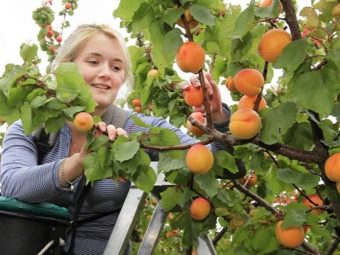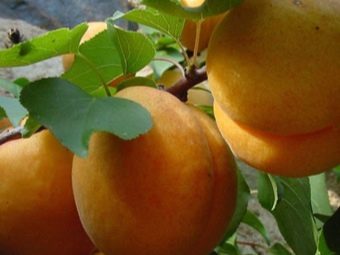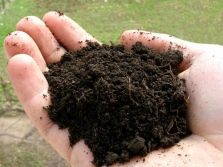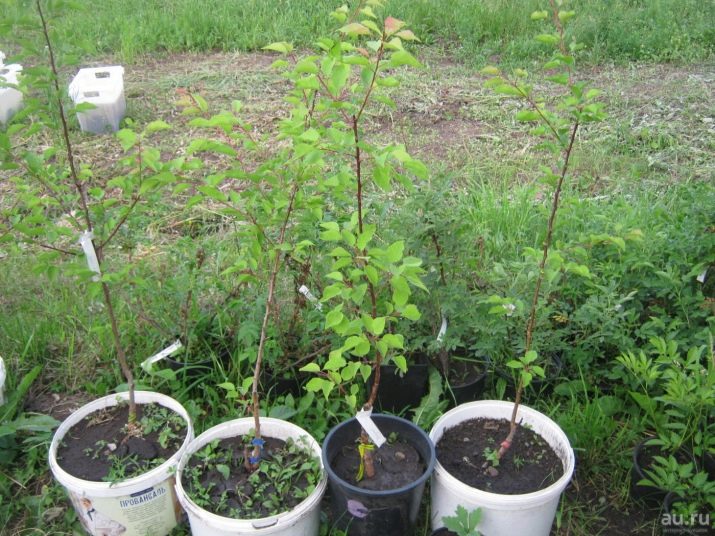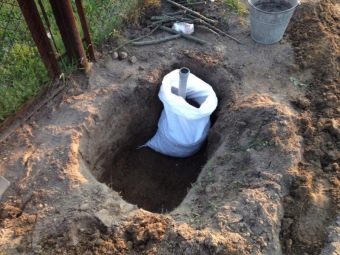Apricot "Champion of the North": characteristics of the variety and peculiarities of cultivation

Due to the long and hard work of breeders, people have a unique opportunity to cultivate heat-loving plants where this is not typical of them.In the world there are a significant number of subspecies of apricot, growing north of those areas where it is usually distributed. But even this arrangement does not affect the good growth of the culture and a large number of tasty fruits.
One example that has good growth and fecundity is the Apricot of the "Champion of the North" variety, which has become possible to cultivate not only in the south, but also in central Russia - for example, in the Moscow region.
Description
Apricot "Champion of the North" can grow to 5 m in height, while other types of apricot can reach 8 m in height. This is due to the characteristics of the variety, as well as to the place of its growth and environmental factors. The branches of the tree are thick, strong, and the crown is rounded and not too thick. This variety begins to bloom in the third year, and to bear fruit on the fourth after planting the seedling in the soil. At the same time, a high level of fruiting is noted not immediately, but by 5-6 years. Fruit ripening usually occurs at the end of July - early August.
Experienced gardeners note that this subspecies of apricot has good yield indicators - you can remove up to 25 kg of fruit from one tree. The fruits of this variety are incredibly tasty, juicy and sweet, and the flesh is orange in color like a ripe orange. The size of the fruit with proper care can be up to 65 g. Stone is very easily separated from the edible part. The peel is of medium thickness, very strong and does not crack in heat or rainy weather.
Reviews
On the Internet, you can find reviews of summer residents and gardeners who have already harvested this variety of apricot. Opinions are mostly positive. Many say that this variety is very hardy and unpretentious, so it hibernates well even during blizzards, snowfalls and easily tolerates various diseases. If the tree is properly prepared for the cold, then even the youngest plant will winter without problems and will grow next year with new strength.
Negative comments should also be noted, in particular, some gardeners believe that the flesh of the champions of the North apricots is too dry and the skin is sour.
Preparation for disembarkation
When preparing a seedling for planting, first of all, it is necessary to establish what type of soil is in the country, because the Champion of the North variety is most suitable for loose soil. The best soil for growth and development of this variety:
- sod-podzolic;
- loam;
- black earth
In general, the plant is unpretentious and can grow in any other soil, although the yield indicators will decrease somewhat. For planting you need to find a place that would be ideally suited to the plant. It is better to place it on a platform with a flat surface away from other bushes, trees or buildings, because the apricot is light and thermophilic. But the shadow and penumbra do not suit him and will negatively affect growth and fruiting
Before planting, the seedling must be chosen very carefully. It is better to buy it in specialized stores or farms for the cultivation of plants for the garden. If this is not taken into account, then the probability to acquire low-grade, and sometimes wild, weeds is large enough, and the tree will not be happy with the quantity and quality of fruit. It will be important to check the integrity of the seedling when buying. Assess its appearance, smoothness and strength of the trunk. The plant should be without a single cut, hack and other defects.
It is best to buy two-year-old seedlings - despite the fact that the apricot is still small and weak, it is easier to acclimatize to new conditions. Before planting, the optimal time for it is calculated, which completely depends on the region and region. In the more southerly lands, it is better to plant apricots in the autumn, and in cooler regions it is preferable to do it in the spring.
Landing
To begin with, choose a sunny place and dig a square hole with sides equal to 50 cm. After that, the nutrient mixture is prepared, so that the seedling will take root faster and grow.To obtain additional fertilizer mix 2 buckets of earth with a bucket of humus, then add about 400 g of chemical fertilizer. The resulting nutrient mixture should be poured into the hole by half so that in the center was elevation.
After all the preparations in the hole set the seedling. Here it will be important to distribute the roots along the slope so that they would take root and grow better. After we fall asleep the tree with the remaining mixture and lightly tamp it. Then we water the apricot with several buckets of water, while it is better to water the ground itself, because if you pour it on a tree, the trunk and root collar may rot with excess moisture. After settling the ground at the landing site you need to sprinkle it with earth again. If this is not done, the roots of the tree may become bare. It is useful to add mulch, which immediately performs several useful functions. This is more loose soil, and aeration, and protection from weeds, and additional nutrition.
Care
An important aspect for most gardeners and gardeners is the ease of care for this variety. Watering trees should be no more than 4 times a year, following a simple schedule - first in early spring, during flowering, then after a month, at the beginning of July and at the end of summer. An important point of care is fertilizing with fertilizers, because apricot needs phosphorus, nitrogen and potassium for good growth and development. It will be important to observe the sequence in making the feeding. First of all, the earth is flavored with nitrogen in early summer. The following month, a mixture of the above three elements is used, and at the end of the summer - a “cocktail” based on potassium and phosphorus.
Mulching or surface covering of the soil with mulch to protect the plant and improve its fertile qualities is carried out in the first 2 years of the seedling's life. It is important to periodically loosen the soil around the tree, because water seeps into the dense soil worse. Apricots do not need to be pruned, and to form a correct and beautiful shape, you will need to remove only damaged and dried branches. In autumn, after the foliage has completely subsided, trees should be whitened. The plant is treated with a special mixture, based on lime, water, clay and copper sulphate. This manipulation is very important for preparing the seedling for the winter, because it protects against rodents and prevents the crust from cracking.
In general, taking care of such trees is very simple and subject to the basic rules of care, this subspecies of apricot will delight you with its appearance and rich harvest for many years.
See how to plant and care for apricots in the video below.


